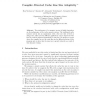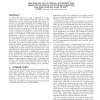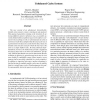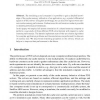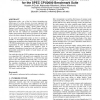ISCA
2007
IEEE
14 years 4 months ago
2007
IEEE
The center of gravity of computer architecture is moving toward memory systems. Barring breakthrough microarchitectural techniques to move processor performance to higher levels, ...
IMS
2000
14 years 7 months ago
2000
The performance of a computer system is highly dependent on the performance of the cache memory system. The traditional cache memory system has an organization with a line size tha...
FPGA
2000
ACM
14 years 7 months ago
2000
ACM
A considerable portion of a chip is dedicated to a cache memory in a modern microprocessor chip. However, some applications may not actively need all the cache storage, especially...
MTDT
1999
IEEE
14 years 8 months ago
1999
IEEE
The new concept of an unbalanced, hierarchicallydivided cache memory system is introduced and analyzed. This approach generalizes existing cache structures by allowing different m...
PARA
2004
Springer
14 years 9 months ago
2004
Springer
Abstract. By simulating a real computer it is possible to gain a detailed knowledge of the cache memory utilization of an application, e.g., a partial differential equation (PDE) s...
ACMSE
2004
ACM
14 years 9 months ago
2004
ACM
Replacement policy, one of the key factors determining the effectiveness of a cache, becomes even more important with latest technological trends toward highly associative caches....
ISLPED
2005
ACM
14 years 9 months ago
2005
ACM
This paper proposes a non-uniform cache architecture for reducing the power consumption of memory systems. The nonuniform cache allows having different associativity values (i.e.,...
ISLPED
2006
ACM
14 years 10 months ago
2006
ACM
This paper presents an energy-conservation method for multiple disks and their cache memory. Our method periodically resizes the cache memory and controls the rotation speeds unde...

